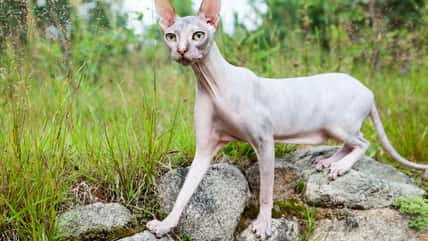Wolves Are Bringing Balance Back To Yellowstone And Helping Willow Trees Grow

In Yellowstone National Park, wolves and other large carnivores are slowly but steadily bringing back balance to the ecosystem, particularly in herbivores and plants.
A new study evaluated a phenomenon known as “trophic cascade,” which refers to the indirect effects of predators on the lower levels of the food chain.
Trophic cascades play a major role in shaping ecosystems. Researchers wanted to see how wolves have impacted the growth of willows, so they examined data from 25 streamside sites collected over a 20-year period from 2001 to 2020.
The study showed a 1,500 percent increase in willows in northern Yellowstone National Park, driven by the effects on elk due to the reintroduction of wolves from 1995 to 1996, among other factors.
Willows are a common food source for elks, and elks are a primary food source for wolves. So, more wolves means more willows.
“Our findings emphasize the power of predators as ecosystem architects,” said Dr. William Ripple, the leader of the study from Oregon State University and the Conservation Biology Institute in Corvallis, Oregon.
“The restoration of wolves and other large predators has transformed parts of Yellowstone, benefiting not only willows but other woody species such as aspen, alder, and other berry-producing shrubs. It’s a compelling reminder of how predators, prey, and plants are interconnected in nature.”
By the 1920s, wolves were hunted to eradication, and cougars were driven to low numbers at Yellowstone. Soon, grazing by elk increased, which caused severe damage to the park’s woody vegetation.
Similar effects occurred in places like Olympic National Park in Washington and Banff and Jasper National Parks in Canada after wolves were lost. Wolves were reintroduced to help control the growing population of elk at Yellowstone.

Sign up for Chip Chick’s newsletter and get stories like this delivered to your inbox.
Reintroduction efforts began on January 12, 1995, when eight gray wolves were transported by truck from Canada to Yellowstone. They were the first to enter the park in nearly seven decades. By the next year, their number had tripled.
Yellowstone offers a rare opportunity to see how much plant life recovers after predators are restored, as few studies worldwide have looked into this dynamic.
“Our analysis of a long-term data set simply confirmed that ecosystem recovery takes time. In the early years of this trophic cascade, plants were only beginning to grow taller after decades of suppression by elk,” said Dr. Robert Beschta, a professor at Oregon State University.
“But the strength of this recovery, as shown by the dramatic increases in willow crown volume, became increasingly apparent in subsequent years.”
“These improving conditions have created vital habitats for birds and other species while also enhancing other streamside conditions.”
Overall, these results provide new insights into Yellowstone’s ecosystem and highlight the importance of predator restoration in an ecosystem’s biodiversity and resilience.
The study was published in Global Ecology and Conservation.
More About:Animals





